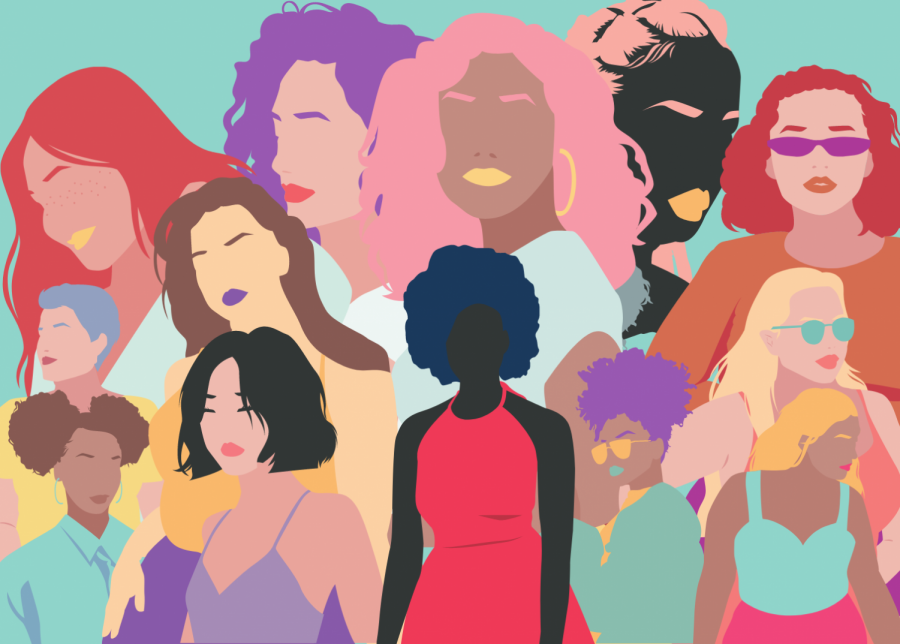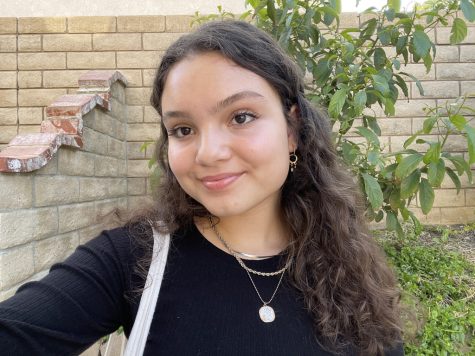Black, White, and Brown: Latinx Discrimination Linked to Underrepresentation
May 11, 2021
Each and every one of us has a unique story, with many longing to have their feelings and experiences validated and represented; to have them normalized. For many, however, especially Latinos, seeing our stories reflected on screen is a rare occurrence. Stereotypes of Latinos perpetuated by the media have constructed a climate of opinion entailing the belief that Latinos are distinguished by a narrow set of characteristics. This ideology of what all or most Latinos are like is absolutely false. Latin America consists of an extremely diverse demographic, with people of all races, and people with various experiences, opinions, and ideas. The perpetuation of stereotypical Latinx tropes has resulted in the exclusion of stories and diversity that would otherwise be portrayed if the media were more inclusive and encompassing in the portrayal of Latinx characters. Greater, more diverse, and accurate Latinx representation in the media must be catalyzed to bring forth an accurate depiction of the culture and community.
Prior to commencing this article, I would first like to define a few terms that you will encounter frequently throughout this piece. Latinx is a non-binary alternative to the terms Latino or Latina. This term encompasses individuals with origin or descent from Latin America. Being Latin American is not a race, but an ethnicity. Hispanic is a narrower term that only encompasses individuals with origin or descent from Spanish-speaking countries in Latin America (e.g., Mexico). There are a total of 19 Hispanic countries. A person who is Hispanic is also Latinx, however, the two terms are not interchangeable. Hispanic American refers to Americans with Hispanic ancestry. Afro-Latinx refers to Latin Americans with significant Black ancestry. Colorism is discrimination solely based on skin color. Colorism transpires within a single race, perpetuating disadvantages upon those with darker skin and bestowing advantages upon those with lighter skin. White passing refers to when a non-white individual is perceived by others as a white person. White privilege refers to the advantages that society bestows upon white people relative to their non-white counterparts. White supremacy is the ideology that white is the superior race. Anti-Blackness is racial prejudice against Black people. Systemic racism, or institutionalized/ structural racism, refers to various systems, institutions, and policies that interact to create and reinforce racial inequality over a long period of time. Current and historical examples of systemic racism include slavery, segregation, the criminal justice system, and the caste system.
Before continuing, please ensure that you have reviewed and understood the terms above to guarantee the most fulfilling reading experience possible.
Although the media is often deemed toxic, unhealthy, and dangerous (and it certainly can be), it would be dismissive to disregard its beneficial aspects. Media can often be a source of catharsis, providing a place for people to validate their emotions and feel heard. Movies, television shows, books, and other sources of entertainment can be microcosms of society, acting as mirrors of emotions and ideas that allow people to see themselves being reflected — and see their stories being deemed as normal. However, when these stories become limited to a narrow trope of characteristics, it hinders that reflection; it hinders representation. Some may claim that Latinx representation is higher than it actually is, however, this is a common misconception as not all Latinx roles are portrayed by actual Latinx people. For instance, Tony Montana from the 1983 film Scarface, a Cuban, was portrayed by Al Pacino, an Italian-American. Olivia from the 2018 Netflix series On My Block, a teenager of two Mexican parents that were deported back to their home country, was portrayed by Ronni Hawk, a white American. Ronni Hawk has also portrayed Rachel Diaz in Stuck in the Middle, where she is part of a Latino family. Incidentally, of all speaking characters across the 100 top-grossing movies from 2007-2018, only 4.5% of them were Latinx. In 2018, 18.3% of the United States’ total population consisted of Latinos, meaning that Latinx representation in movies was 13.8% below the U.S. Census — with a mere 3% of those films featuring Latinx lead or co-lead roles. Of these roles, it is often the same few actors/ actresses that are featured: Jennifer Lopez, Cameron Diaz, Eugenio Derbez, and Jessica Alba.
Latino roles are often immensely limited because, despite Latinos being the largest ethnic minority group in America, a sole, narrow definition of Latinx people has been continuously perpetuated, and the media wants to continue to fuel that conformity. Therefore, Afro-Latinos, Indigenous Latinos, Dominicans, Cubans, and other darker-skinned Latinos are far less likely to attain Latinx roles, simply because the idea that they do not appear “Latino enough” has been sustained. Between 2000-2009, Afro-Latinx representation in film was 0.6%, with Afro-Latinos constituting 1.3% of all supporting actor appearances on television. And, between 2010 and 2013, there was not a single Afro-Latino actor cast as a lead role. Despite possibly having stronger connections to their Latinx cultural background, Afro-Latinos are far less likely to play Latino roles compared to their lighter-skinned counterparts simply due to their appearance.
Colorism plays a significant role in the lack of diverse representation as well. Proximity to whiteness can not only affect which actors score Latino roles, but what roles they portray. Oftentimes, actors and actresses with European features (blonde, straight hair, blue or green eyes, light skin) are portraying those of higher social status, especially in telenovelas. Darker-skinned Latinos often portray those of lower social status (maids, nannies, criminals, drug dealers, etc.). Incidentally, a qualitative analysis of the 200 top films from 2017-2018 revealed that 24% of all Latinx characters were portrayed as criminals, with 13% of all Latinx speaking characters depicted to be poverty-stricken. This is not a coincidence. Colorism and white supremacy are prevalent in the Latinx culture and have been since Latin America emancipated from Europe (between 1808-1826). Latin Americans relied on mestizaje — the interweaving of races and cultures — to create the “ideal” citizen, which was considered to be those with light skin. This concept of racial mixing to bring forth a lighter-skinned population is still a common ideology today, although far less reinforced. The internalized discrimination within Latin American communities is a major issue in itself, but is also affecting Latinx representation in the media, and the view that many people hold of Latinos.
However, it is not just Latinx representation in film that sullies the views people hold of the community, but invalid representation on the internet that is imprinting a false perception of Latinx people. Some Latinx influencers — YouTubers/ content-creators — are exploiting their ethnicity for fame by perpetuating false stereotypes of their culture. Influencers such as Jen_ny69, Louie’s Life, Nikita Dragun, Lele Pons, Rudy Mancuso, and Juanpa Zurita have produced videos defining the Latinx people solely based on stereotypes that the community already holds. These stereotypes often include eating a copious amount of spicy foods and Hot Cheetos, spewing profane language in Spanish, and throwing in Spanish lingo every once in a while. More specifically, comedy sketch YouTubers produce content that is often racially and stereotypically based for not just Latinx people, but for other races and ethnicities as well. These YouTubers (e.g., Lele Pons, Rudy Mancuso, and Juanpa Zurita) each have millions of subscribers, with each video garnering tens of millions of views. “Learning How to be a Latina en Español” by Nikita Dragun received nearly 3 million views. “Racist Glasses (Part 2)” by Rudy Mancuso received over 30 million views. “Training to be a Latina” by Lele Pons received over 50 million views. Because children are more impressionable, it is likely that this faulty content is shaping their world view on the perception of people around them. Although this content may be seemingly benign, for a young audience, it is tarnishing their view of Latinx people.
Latinos are not a single entity, but our culture consists of several nationalities, each bearing their own unique traditions. All Latinx individuals hold a distinctive story that should be portrayed for others to see themselves reflected on screen. It can feel ostracizing when our culture that is portrayed on screen bears minimal resemblance to what we experience in our lives. As a result of the continuous perpetuation of Latinx tropes in the media, there is yet an entire world of stories to be unveiled — for audiences to understand that Latinos cannot be defined by a single story. With such a diverse people, our stories overlap and diverge. Latinos are not one thing, we are everything. Our stories deserve to be heard.



